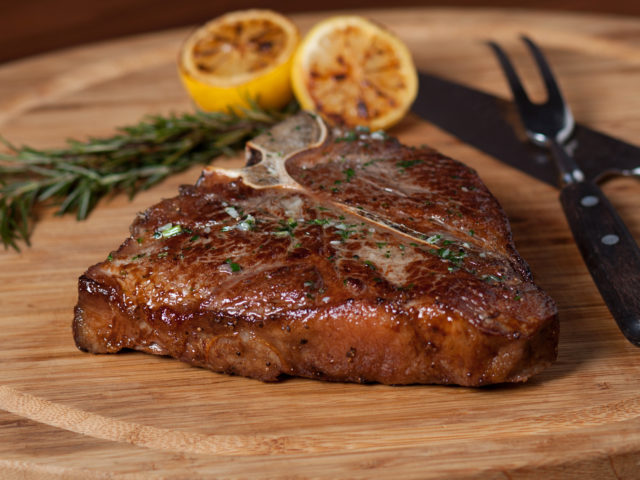There’s nothing quite like biting into a perfectly cooked steak—tender, juicy, with just the right amount of char on the outside. Whether you’re a seasoned home cook or a beginner, mastering the art of cooking steak can take your culinary skills to the next level. With a few simple techniques and tips, you can elevate your steak from ordinary to restaurant-quality.
In this guide, we’ll cover everything you need to know to cook the perfect steak, from choosing the right cut to seasoning, cooking methods, and even resting the meat. Let’s dive in.
1. Choosing the Right Cut of Steak
Before you start cooking, the first step to a great steak is choosing the right cut of meat. Not all steaks are created equal, and the cut you choose will influence the texture, flavor, and cooking time. Here are some of the most popular steak cuts:
Ribeye
Ribeye is known for its marbling, which is the fat running through the meat. This fat renders during cooking, making the steak incredibly juicy and flavorful. Ribeye is a great option for those who love a rich, beefy taste.
Filet Mignon
Filet mignon comes from the tenderloin, making it one of the most tender cuts of steak. It’s leaner than a ribeye, with a mild flavor. If you prefer a softer texture and a less intense beef flavor, filet mignon is an excellent choice.
New York Strip
A New York strip steak is well-balanced, offering a mix of tenderness and beefy flavor. It’s not as marbled as a ribeye, but it has enough fat to keep it juicy. It’s a solid middle ground between the richness of ribeye and the tenderness of filet mignon.
T-Bone/Porterhouse
These cuts offer the best of both worlds—half tenderloin (filet mignon) and half strip steak, separated by a T-shaped bone. Porterhouse steaks are typically larger, with a bigger portion of tenderloin. These cuts are perfect if you want a variety of textures and flavors in one steak.
2. Preparing the Steak
Once you’ve selected your cut, it’s time to prepare the steak for cooking. This step is crucial to ensuring your steak is flavorful and tender.
Bring the Steak to Room Temperature
Before cooking, take your steak out of the refrigerator and let it sit at room temperature for 30 to 45 minutes. This ensures even cooking, as a cold steak will cook unevenly, leaving you with a raw center and overcooked exterior.
Pat the Steak Dry
Use paper towels to pat the steak dry. Removing excess moisture helps the steak develop a beautiful crust when seared. If the steak is too wet, it will steam rather than sear, leading to a lackluster crust.
Season Generously
For the perfect steak, simplicity is key when it comes to seasoning. Generously season both sides of the steak with coarse kosher salt and freshly ground black pepper. The salt helps enhance the steak’s natural flavors and creates a flavorful crust. You can also add a bit of garlic powder or crushed rosemary if you want to get creative, but salt and pepper alone can do wonders.
3. Choosing the Right Cooking Method
There are several methods to cook steak, but the best one depends on your preferences and equipment. Here are two popular techniques: pan-searing and grilling.
Pan-Searing (Perfect for Indoor Cooking)
Pan-searing is one of the easiest ways to cook a steak and guarantees a beautiful, caramelized crust. Here’s how to do it:
- Use a Cast-Iron Skillet: Cast iron is ideal because it retains and distributes heat evenly, ensuring a good sear. Heat the skillet over medium-high heat for about 5 minutes.
- Add Oil: Add a high smoke-point oil, like canola or vegetable oil, to the hot skillet. You only need enough to coat the bottom of the pan.
- Sear the Steak: Place the steak in the skillet, laying it away from you to avoid splattering. Don’t move the steak for 2-3 minutes, allowing a crust to form. Flip the steak and sear the other side for another 2-3 minutes.
- Add Butter and Aromatics: In the last minute of cooking, add a knob of butter, along with garlic cloves and fresh herbs like thyme or rosemary. Spoon the melted butter over the steak to baste it, adding extra flavor.
- Check the Temperature: Use a meat thermometer to check the internal temperature. For a medium-rare steak, aim for 130-135°F (54-57°C). Adjust the cooking time according to your preferred doneness.
- Let It Rest: Once the steak reaches your desired temperature, remove it from the skillet and let it rest for 5-10 minutes before slicing. Resting allows the juices to redistribute throughout the steak, ensuring every bite is juicy.

Grilling (Ideal for Outdoor Cooking)
Grilling is another popular method that adds a smoky flavor to your steak. To grill the perfect steak, follow these steps:
- Preheat the Grill: Whether you’re using gas or charcoal, preheat the grill to high heat (450-500°F).
- Oil the Grates: Lightly oil the grill grates to prevent the steak from sticking.
- Grill the Steak: Place the steak directly over the hottest part of the grill. Sear each side for 2-3 minutes, then move the steak to a cooler section of the grill to finish cooking.
- Monitor the Temperature: As with pan-searing, use a meat thermometer to check the steak’s internal temperature. Pull the steak off the grill when it’s about 5°F below your desired doneness, as it will continue to cook while resting.
- Let It Rest: Always rest the steak before cutting to retain the juices.
4. Doneness Guide
Cooking steak to the perfect doneness is a personal preference, but here’s a general guide to help you achieve your desired level:
- Rare: 120-125°F (49-52°C) – Cool, red center
- Medium-Rare: 130-135°F (54-57°C) – Warm, red center
- Medium: 140-145°F (60-63°C) – Warm, pink center
- Medium-Well: 150-155°F (65-68°C) – Slightly pink center
- Well-Done: 160°F+ (71°C+) – Little or no pink
Using a meat thermometer is the best way to ensure accuracy. Insert it into the thickest part of the steak for the most accurate reading.
5. Finishing Touches
Once your steak is cooked and rested, it’s time to add the finishing touches that will take it to the next level.
Slice Against the Grain
When slicing the steak, always cut against the grain. The grain refers to the direction the muscle fibers run through the meat. Slicing against the grain shortens these fibers, making each bite more tender.
Add a Sauce or Compound Butter
For an extra burst of flavor, top your steak with a pat of compound butter (butter mixed with herbs, garlic, or spices) or serve it with a classic steak sauce like chimichurri, béarnaise, or red wine reduction.
6. Sides and Pairings
A perfect steak deserves perfect sides. Consider pairing your steak with:
- Mashed Potatoes – Creamy and comforting.
- Roasted Vegetables – Adds balance to the richness of the steak.
- Steakhouse-Style Salad – A crisp salad with blue cheese and bacon.
For those looking to add an extra touch to their meal, consider using the NosBoss Whipped Cream Dispenser Melbourne to create flavorful toppings, enhancing your steak experience with whipped toppings or unique sauces. For drinks, a bold red wine like Cabernet Sauvignon or a craft beer with depth will complement the flavors of your steak.
Conclusion
Cooking the perfect steak is all about patience, precision, and a few key techniques. With the right cut, proper seasoning, and attention to doneness, you can enjoy a steakhouse-quality meal at home. Whether you prefer pan-searing indoors or grilling outdoors, remember that resting your steak and slicing against the grain are essential steps to ensure each bite is tender and flavorful. Enjoy!





